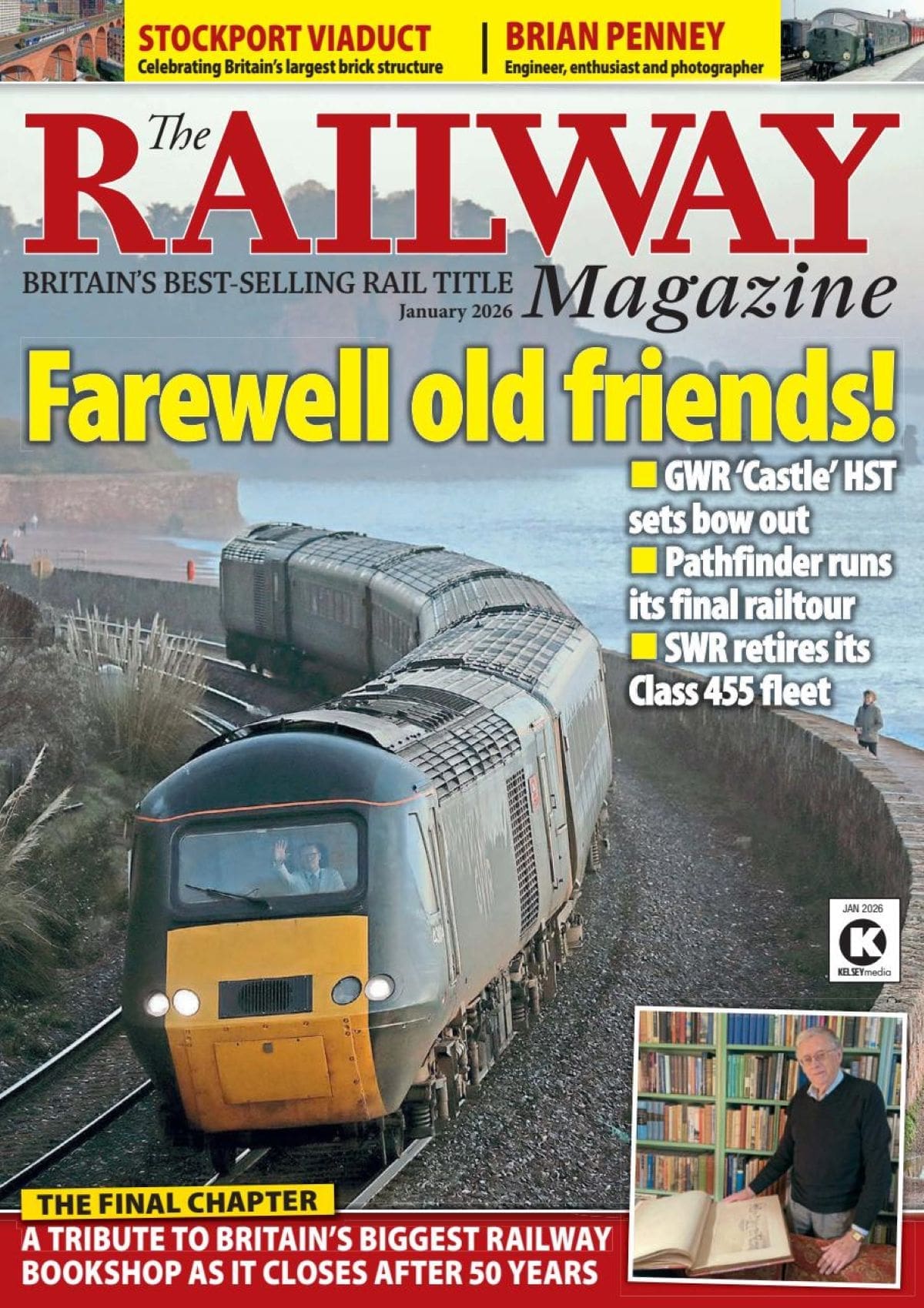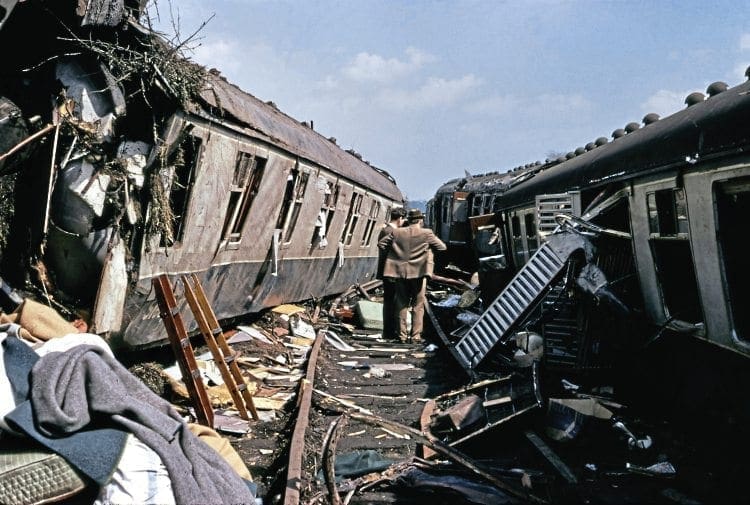
A severe curve on the East Coast Main Line located at the Northumberland town of Morpeth became infamous after two railway accidents within 15 years.
Fraser Pithie reflects on the events 50 years ago in May 1969, and 35 years ago in June 1984, and the significance they subsequently had on the safer operation of the UK’s railway network.
May 1969 – The Down ‘Night Aberdonian’
It was an ordinary spring evening at King’s Cross station on May 7, 1969, as passengers joined the sleeper train to Aberdeen, complete with its brakevan loaded with parcels, perishables, flowers and even a live pig in a crate.
From the history of steam through to 21st century rail transport news, we have titles that cater for all rail enthusiasts. Covering diesels, modelling, steam and modern railways, check out our range of magazines and fantastic subscription offers.
The motive power for the train was one of the Class 55 ‘Deltic’ locomotives, No. D9011 The Royal Northumberland Fusiliers.
The ‘Deltic’, together with its 11 coaches, weighed a total of nearly 506 tonnes, was 262 yards in length, with a reporting number of 1S60.
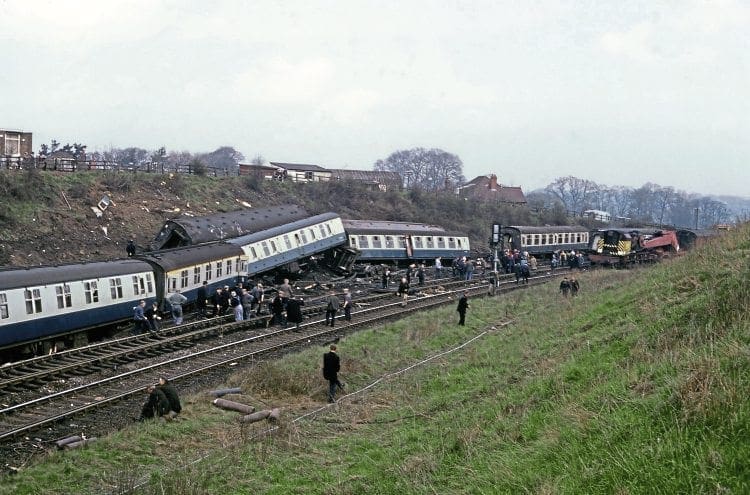
The braking power was 382 tonnes or 75.5% of the train’s total weight. The oldest vehicle in the consist was 12 years old.
All the coaches were coupled with the buckeye system except between the ‘Deltic’ and first coach, the corridor brakevan, this being a screw coupling.
Pre-journey checks had taken place ahead of the train’s departure, and these were all clear. The permitted speed of the train was 90mph as there were two brakevans within the consist, each of which were limited to a 90mph speed limit.
The weather was clear and fine as 1S60 headed north, encountering a delay at Grantham of 17 minutes, which by the time the train had left Newcastle had been reduced to seven minutes. The driver was changed at both York and Newcastle.
Upon leaving Newcastle, No. D9011 and the ‘Night Aberdonian’ was under the control of driver L Byers and secondman C Graham, who had relieved the York crew. Byers had 29 years’ service on the railways with more than 20 of those years on the footplate.
He’d been a driver along the route between Newcastle and Edinburgh for eight years, with six years spent driving the ‘Deltics’, so he was conversant with the motive power. Some 16½ miles north of Newcastle lies the Northumberland town of Morpeth, where a severe curve of around 98° is situated.
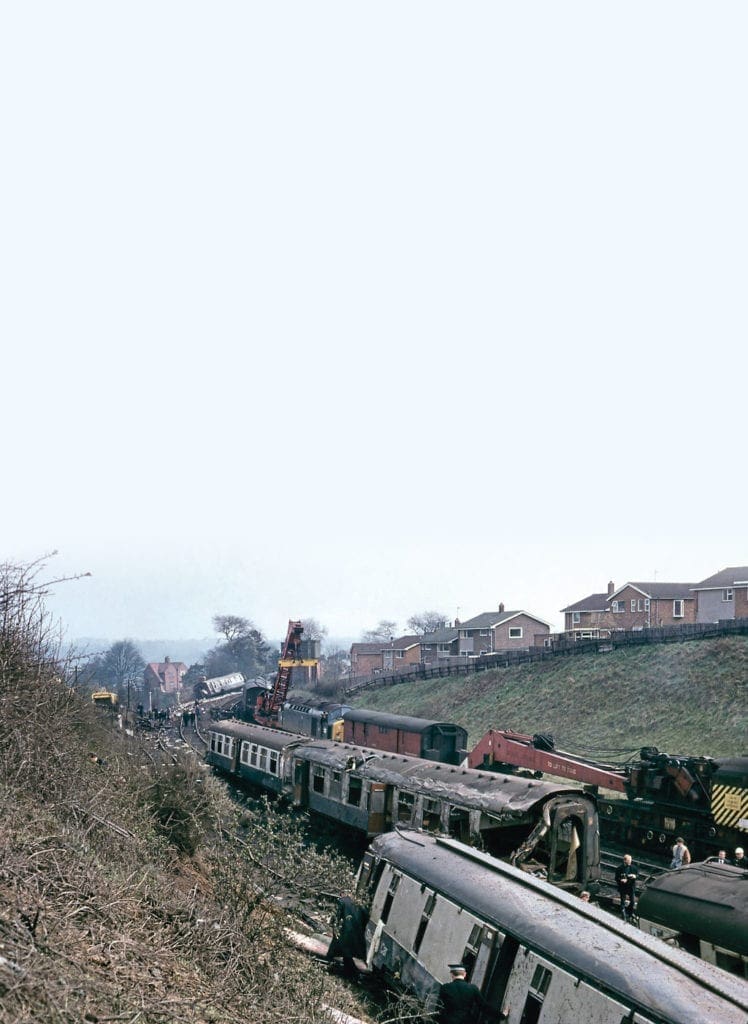
Transition
The Down line transition into the Morpeth Curve started at 16m 308yds and was 160yds long. The total length of the curve, including its transitions, was 792yds.
The nominal curvature of the curve itself was 17 chains with a nominal cant of about 114mm. At the time of the accident, the track approaching and at the point of the initial derailment was of the 95lb ‘Bullhead’ rail type.
The rail had been laid in 1958 in CT2 chairs screwed to wooden sleepers, on stone ballast, with 25 sleepers to each 60ft length and with a check rail. The high rail was re-railed in 1965 and turned in December 1968. The check rail was renewed in 1968, the check rail gap being set at two inches. A rail lubricator was fitted to the high rail 45 yards beyond the start of the transition curve. The check rail was not lubricated.
In 1969, the reliance on route knowledge was as crucial as it remains today, the only difference being that some of the learning points which have led to more significant general safety improvements in the last 50 years had not yet occurred. As a train approached Morpeth on the Down line, it passed some significant and recognisable points, and these were evident in the dark as well as the light. One of these key points was Stanington signalbox and the level crossing nearby to it which was illuminated.
Upon reaching the level crossing, signal S13 came into view; this was the marker for a train running under full line speed to shut off power. The line rose slightly after signal S13, and the combination of shutting off power and the incline had the effect to start to slow the train.
Just before the summit of the incline was a gate box called Clifton Crossing, but it was difficult to see this unlit structure at night. However, when a train reached Clifton Gate box signal D15 came into view, and this would be where a driver would typically make their first brake application to bring down the train’s speed to around 60mph.
Upon reaching signal D15 a second further brake application would be made to bring the train’s speed down to 40mph to ensure the train entered the Morpeth curve, at what in 1969, was the permitted 40mph speed.
Driver Byers said he shut off power at signal S13, but that immediately following him doing so his mind started to wander to a matter that he had been presented with when he had booked on earlier that night. Byers had been given a notice that questioned why he had lost four minutes on a previous service. It was the second such notice that he had received in a month, and he took them very seriously.
It would appear for a very short, but critical period, Byers had been engrossed in trying to think what had been the cause of the four minutes loss on a previous service. Byer’s secondman, C Graham, moved over in the cab of the ‘Deltic’ as he became concerned the speed was not reducing in time for the curve.
Byers came to his senses and made a full brake application. As he did so, Graham was thrown off his feet in the cab of the ‘Deltic’.
The train was trying to negotiate Morpeth curve at 80mph, double the permitted speed.
The combination of velocity and mass are determined by physics. Newton’s laws tell us that every force has an equal and opposite reaction and it is a moot point as to whether it is the centripetal which is the action or the reaction to the centrifugal; in any event it is why a moving body going around a curve wants to “flee the centre”.
It is normal practice at curves to place a cant on the track which acts to a degree in mitigating the forces at play when a train goes around a curve. However, there is a limit on the degree of cant that can be used and a limit of how far any cant can mitigate the effect of the centrifugal force arising from the velocity of a train negotiating a curve.
The critical elements to remember are the mass and velocity of the train. It is these which are the ‘smoking gun’ because double the velocity gives a fourfold increase in the force generated because of the ‘square law’ relationship that governs the centrifugal force. Consequently, it’s no great surprise that a train travelling at 80mph when it should only have been 40mph decided to ‘flee the centre, consequently derailing and heading away from the curve.
Next to the place where the train came off the rails was the Stobhill Grange Estate, and one carriage ended up perched on a bank overlooking the Deuchar Park Estate, also nearby.
The local WRVS was mobilised, as were all the emergency services from across Northumberland and Tyneside. Garage crews were called out to assist the firefighters by providing additional cutting equipment. Despite all these efforts the derailment had cost the lives of six people and injured 121 others.
The Northumberland Gazette reported that people scrambling their way out of the wreckage were told to get off the tracks as there was another train coming. While the secondman took measures to protect the Up line, no one had gone back to protect the Down line.
Thankfully, a freight train which was approaching the scene was stopped by the use of time interval working and the vigilance of the driver, who managed to stop short of the damaged Down line at the start of the curve.
Colonel Robertson, who led the inquiry into the 1969 accident, stated he had been impressed by driver Byers and considered him to be a very good type of driver who was careful and conscientious.
However, Col Robertson said Byers had let the notice of late running dwell on his mind too much. He summarised: “He allowed something minor and outside his immediate driving duty to influence his strict observance of it, and in this, he was very seriously at fault”.
The ‘Up’ Night Aberdonian – June 1984
The old saying that lightning doesn’t strike twice in the same place attracts little endorsement from the people of Morpeth. The night of June 24, 1984, when another major derailment took place at Morpeth, saw to that. The ‘Night Aberdonian’ was involved again, but this time it was the ‘Up’ service.
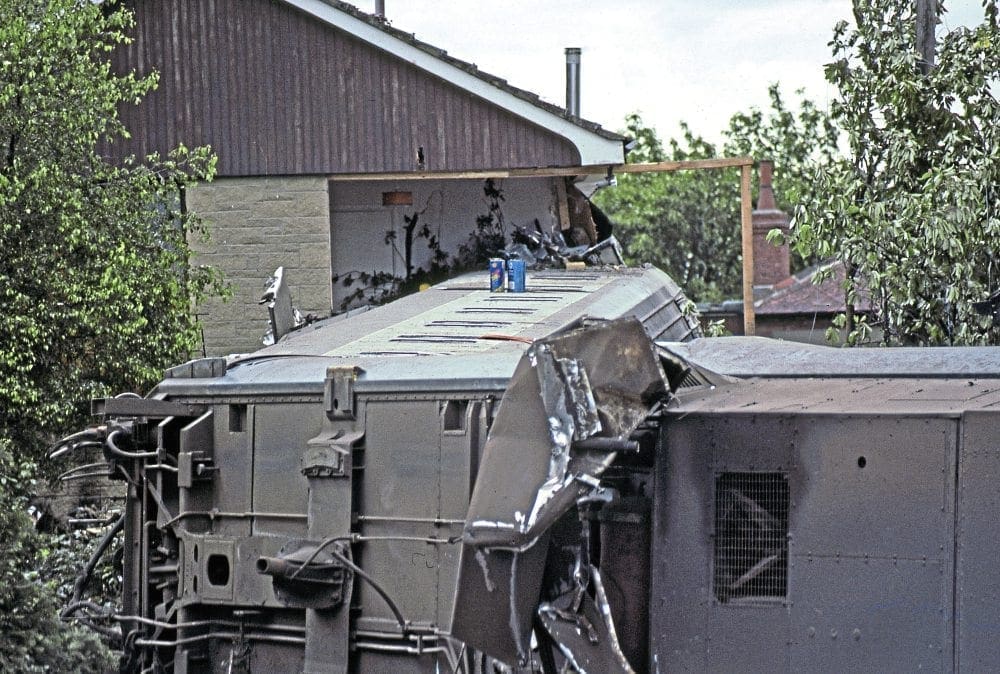
By 1984, BR’s sleeper rolling stock had been entirely renewed by the Mk3 sleeper. Based on the successful and robust construction of BR’s Mk3 carriages, which had been developed and introduced with the InterCity 125 and also for WCML services, the sleepers were a marked improvement on the previous Mk1 sleeper stock they replaced. This was just one of several factors that came into play on what would be another fateful night at Morpeth Curve, haunting the railway and the town.
The events in the early hours of June 24, 1984, started before the overnight sleeper from Aberdeen to King’s Cross, reporting number 1E48, had even reached Edinburgh station. The man rostered to take 1E48 south from Edinburgh was driver Allan, 58, and who booked on duty at Edinburgh Haymarket, the shed where he was based.
Drink
Allan had 42 years’ experience as a railwayman and had worked mainline trains in and out of Edinburgh since 1972. His duty on the evening of June 23 would be his seventh successive night shift.
Allan booked on duty by telephone from a shunters ‘bothy’ underneath the disused Waverley East signalbox, having walked there from the Waverley Goods Yard car park.
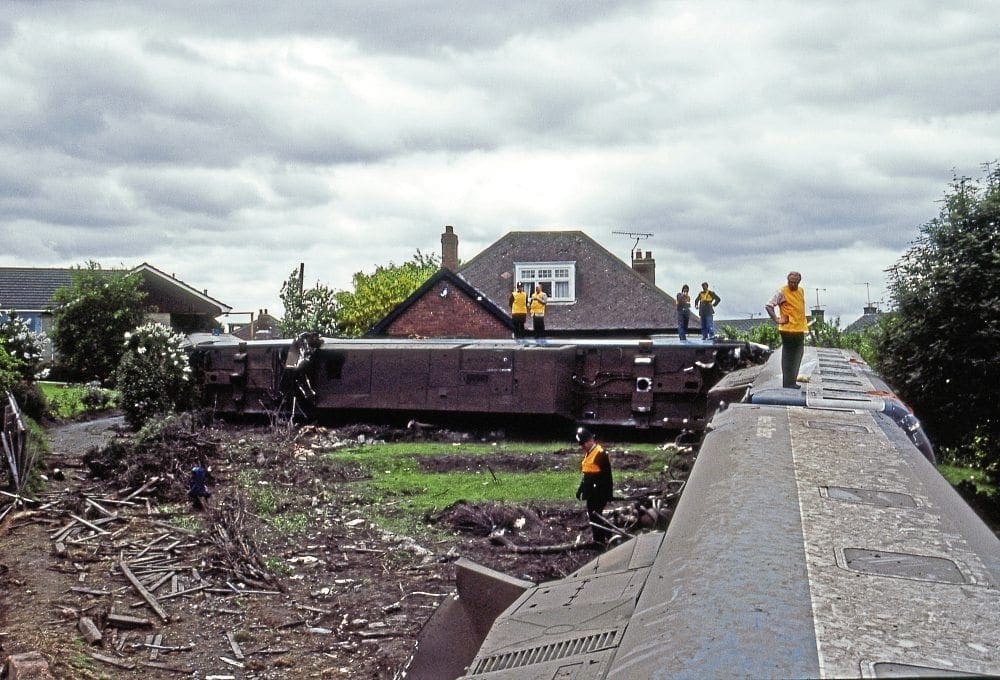
A time clerk took Allan’s call at the booking on point. However, before arriving at Waverley, Allan had called into a public house in Musselburgh where he drank a whisky short followed by a pint of lager.
Upon arrival at Waverley, and after booking on, Allan returned to his car and picked up two cans of lager, one regular and the other extra strong. He subsequently drank these and little was then known of his whereabouts for around an hour until his train, 1E48, arrived.
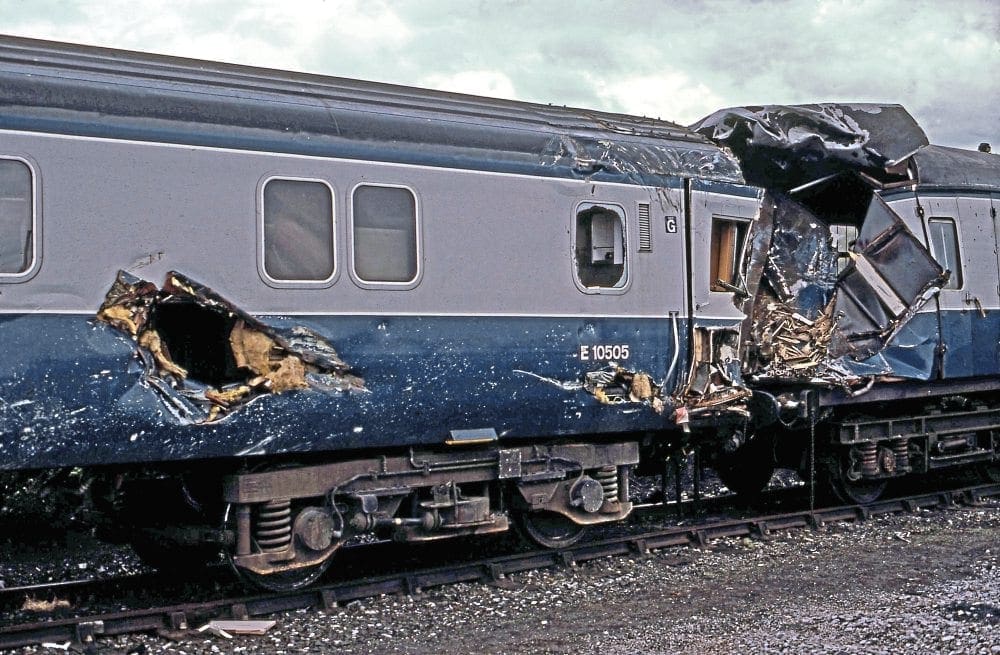
The sleeper was hauled by Class 47 No. 47452, and as it headed south that night, it made good progress. On the Up main line approaching Morpeth, three permanent speed restrictions applied. The first required trains to decrease their speed from 100mph to 80mph at the viaduct near Pegswood, with another reduction within a mile to 70mph for the Morpeth North curve, and a final further and crucial speed reduction down to 50mph at Morpeth station just ahead of the severe south curve. These speeds were higher than those in place in 1969 and were introduced in 1977. The higher permitted speeds were as a result of the cant of the curve being raised from 114mm to 150mm to accommodate the increased speed.
No. 47452 was hauling a brakevan followed by seven, what were then, relatively new Mk3 sleeping coaches with another brakevan on the rear; in total the train weighed 491.5 tonnes.
Six miles north of Morpeth, at just after midnight, the lookout for a tamping machine on the Down line saw 1E48 approaching by means of its headlight, the lookout sounded the tamping machine’s horn and the ‘Night Aberdonian’ responded with the ‘47’ sounding its horn. It was the last piece of evidence as to the alertness of driver Allan.
Within minutes the ‘Night Aberdonian’ entered Morpeth station at between 85mph and 90mph. The preceding speed restrictions had not been obeyed, and now the near 500-tonne mass entered the notorious severe curve at nearly twice the permitted speed.
Even with the increased cant, there was no way the physics of the situation could be denied; the train derailed 41 metres after the end of Morpeth station platform destroying the Down main line for 144 metres.
The brakevan and first sleeping coach were the first to derail because of their much lighter weight compared to the Class 47. The nearside wheels were lifted off the inner rail with the carriages falling onto their offsides and causing the Class 47 to derail too.
The force arising from the derailment led the first sleeping coach to slide away from the curve, eventually ending up in the corner of a bedroom of a nearby home, which thankfully was unoccupied at the time.
A rail of the Down line was thrown out and over the Up line, coming to rest on the bank alongside the Up line with the rail’s end smashing into a greenhouse in a garden at the top of the bank. Ballast effectively became shrapnel, with windows in four nearby houses having their windows put in as well as doors, tiles and nearby roadways showered by the stone.
Despite the force and scale of the accident, thankfully, no one lost their life. British Rail’s new Mk3 sleepers played a significant part in protecting passengers, with the inherent build strength they had as part of their design.
Photographs taken at first light showed how the train behaved; it had been slewed and thrown around a wide area. The loco ended up on its side with driver Allan taken to hospital for treatment along with 29 other passengers. How could this have happened on a curve that just 15 years prior had witnessed a loss of life caused by a similar event, albeit in the opposite direction?
Not guilty
There are two elements to the answer. The full details of one element are under lock and key at the National Records Office with no release likely for several years. This element refers to the trial of Allan, held at Newcastle Crown Court following the accident. Allan was found not guilty by a jury of endangering the safety of passengers on a railway through neglect.
HMRI Inspector Lt Col A G Townsend-Rose was very critical of poor booking on procedures at Edinburgh and the lack of any process whatsoever that checked employees being under the influence of alcohol while at work. Townsend-Rose made a number of recommendations concerning these matters.
Following the end of Allan’s trial, Townsend-Rose stated: “Driver Allan had failed to control his train properly. There are two possible reasons for this; that he suffered a severe bout of coughing shortly before he should have begun to reduce the train’s speed and remained incapable until the train overturned.
“It seems that driver Allan had never reported to the medical officers the fact that he suffered from an incapacitating coughing condition. In any case, he had only to take his foot off the DSD (driver’s safety device) pedal to apply the brakes and shut off power if he had begun to cough uncontrollably.
“Alternatively, it is possible that he became drowsy and inattentive because of the drink he had taken. In the last six miles approaching Morpeth at some 80mph or more, he may have fallen asleep, or become so drowsy that he completely forgot about the approaching curve.
“I am strongly inclined to the possibility that he fell fully or nearly asleep as being most likely.”
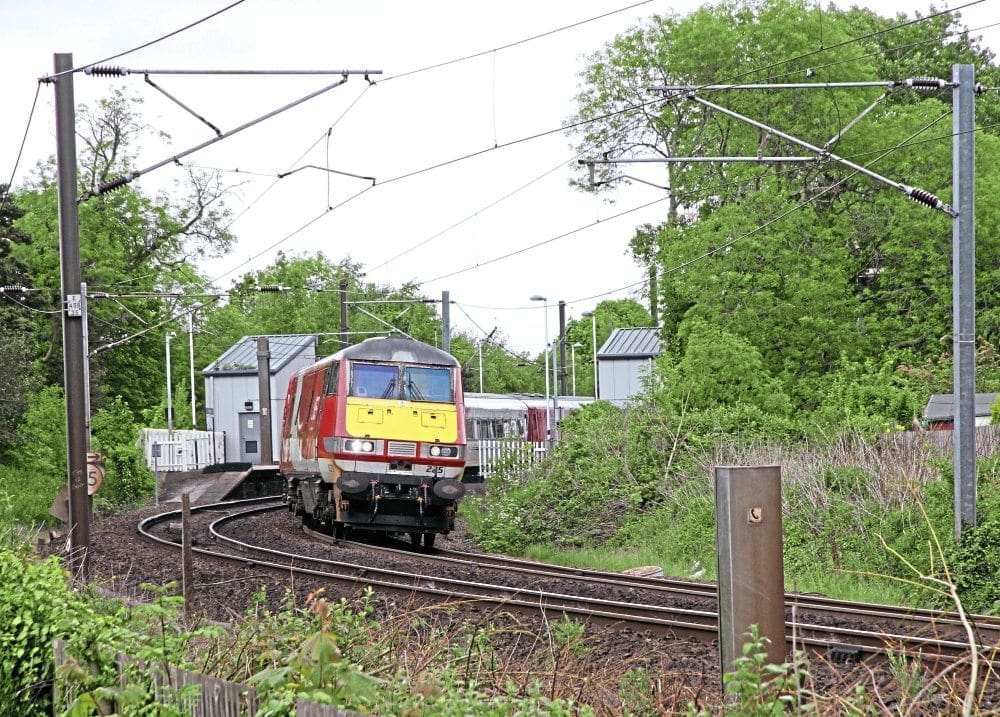
The second element relates to recommendations arising from the previous Morpeth accident.
The ‘Morpeth Boards’ and linked AWS protection had come out of the tragic 1969 event, and it was believed that these would make a significant contribution in preventing a recurrence.
The problem was in specifying where ‘Morpeth Boards’ would be situated there was only one criterion: the line speed immediately preceding a speed restriction needed to be 75mph or more with the reduction required at or in excess of 33% from the preceding speed restriction.
The criteria did not consider a situation – as in the case of the up line at Morpeth – where several successive permanent speed restrictions tapered the speed of a train downwards. This effectively ‘cheated’ the ‘Morpeth Board’ protocol because none of the individual restrictions required a 33% or greater reduction.
If the preceding speed had been 100mph with a straight reduction to 50mph, it would have met the ‘Morpeth Boards’ criteria and an advance PSR board together with AWS magnet would have been installed at the point, where braking to meet the restriction was required.
Put simply, and of course, with the benefit of hindsight, an advance PSR board and magnet should have been fitted in any event to protect trains from the effects of such a severe curve.
Morpeth is a location on the railway associated with several accidents, not least because of their seriousness and the impact they made at the time. However, Morpeth has a much more significant and positive legacy:it eventually focused minds on how, when looking at safety, there is a need to look at all proposed measures and actions to check for and design out any unintended outcomes.
